| Columns Retired Columns & Blogs |
So in August of 2013 you're publishing a review from 1995.
Huh?
Unless otherwise noted, all of the measurements on the Creek 4240 were taken from the CD line-level input to the loudspeaker outputs, with the volume control at maximum.
The Creek 4240 was hot following its one-hour, 1/3-power preconditioning test, but continued to function normally. The Creek's input impedance into its CD input measured 46.9k ohms, with insignificant variations at lower settings of the volume control. Maximum voltage gain into 8 ohms measured a high 35.7dB, and left/right volume control tracking was good, remaining within 0.1dB at all positions checked (9:00 to full on).
The 4240's output impedance was very low, ranging between 0.025 and 0.045 ohms depending on frequency and load impedance. This suggests a very consistent performance—at least with respect to frequency response—into real-world loudspeakers (this was later confirmed with our simulated loudspeaker load). DC offset measured 2mV in the left channel, 0.3mV in the right. Signal/Noise Ratio (ref. 1W into 8 ohms) measured 77.7dB unweighted over a 22Hz–22kHz bandwidth (74.7dB over 10Hz–500kHz, unweighted, and 79.3dB, A-weighted). The 4240 was noninverting, a positive impulse at the input remaining positive at the output.
The output impedance at the Creek's tape outputs was 685 ohms with a 600 ohm source impedance and 124 ohms with a 25 ohm source impedance—indicating an unbuffered tape output. The output impedance at the preamp output measured 2513 ohms; if the 4240 is used to drive an external amplifier or other device, the input impedance of that device should be relatively high. I would recommend at least 20k ohms.
Fig.1 shows the frequency response of the 4240 at 2W into 4 ohms and into a simulated loudspeaker load. There is virtually no difference between the two (the response into 8 ohms, not shown, was also a virtual overlay). Fig.2 is the amplifier's output with a 10kHz squarewave input; a very slight rounding of the leading edge reflects the response rolloff above 20kHz visible in fig.1. The 1kHz squarewave, not shown, is virtually perfect.
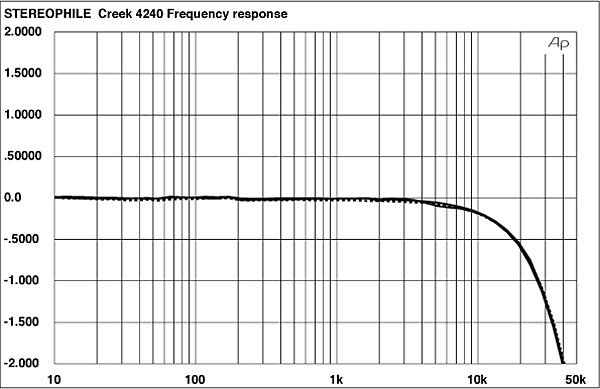
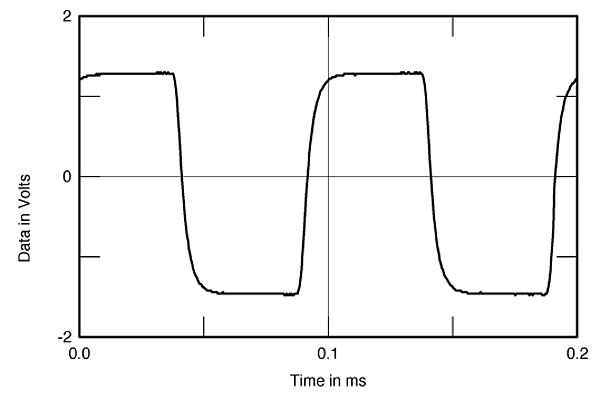
Fig.3 shows the 4240's crosstalk, measured at 1kHz. It is respectable, though not special—certainly adequate to ensure audibly excellent separation. The typical increase at higher frequencies is likely the result of interchannel capacitive coupling.
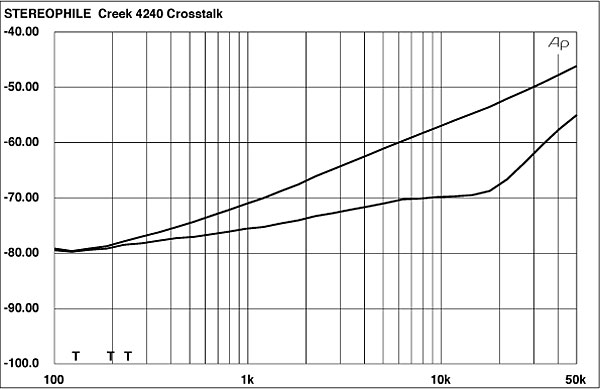
The THD+noise vs frequency results in fig.4 are also reasonable, without being in any way exceptional, though the rise in the treble is a little alarming-looking. The bottom trace in fig.5 shows the Creek's THD+noise waveform in response to a 1kHz input. It appears to be primarily second-harmonic plus noise. A similar result was obtained into other load impedances (curves not shown).
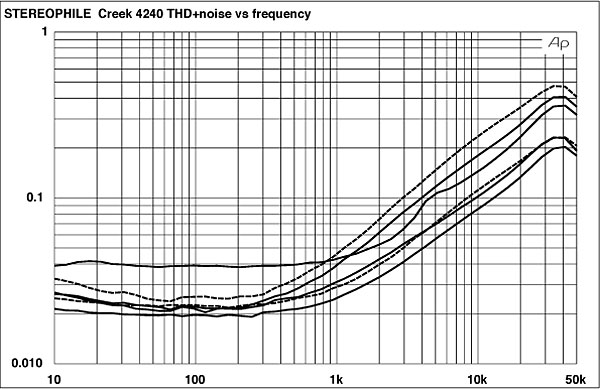
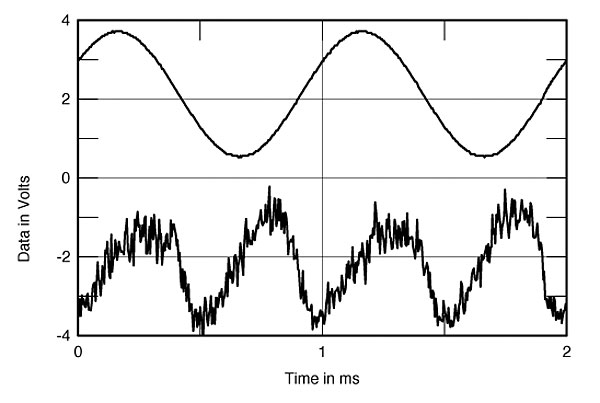
Fig.6 shows the spectrum of the Creek's output while it was reproducing 50Hz at an output of 46W into our simulated loudspeaker load (about 2/3 of its 1kHz power at clipping). This is a very good result; all of the artifacts are below –80dB (0.01%), with the third harmonic dominating what spuriae there were. (A similar measurement taken into a 4 ohm resistive load had even lower artifacts and is not shown.)
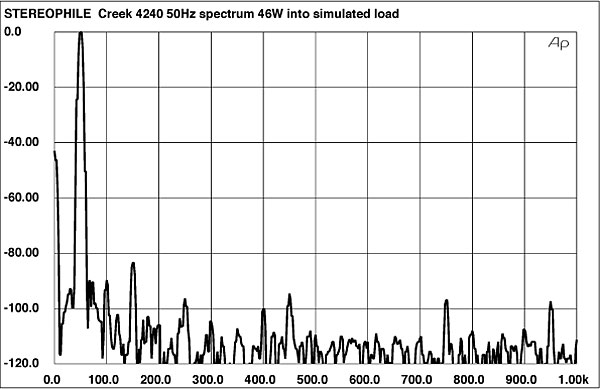
The intermodulation spectrum caused by a combined 19+20kHz input at 31W into 4 ohms (the highest power available with this input prior to visible signs of clipping) is shown in fig.7. This is a reasonable if not notably low result; the artifacts are all below –66dB (about 0.05%)—the level of the distortion component at 18kHz. The result at 28W into 8 ohms, not shown, was cleaner, with no artifacts higher than –80dB.
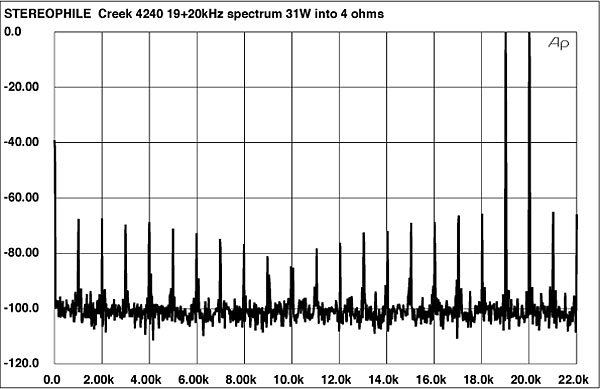
Finally, fig.8 shows the THD+noise vs output power curves for the 4240, one channel driven. The power output decreases into loads of less than 4 ohms. The discrete clipping levels (by our convention, 1% THD+noise at 1kHz), to the nearest watt, are shown in Table 1.—Thomas J. Norton
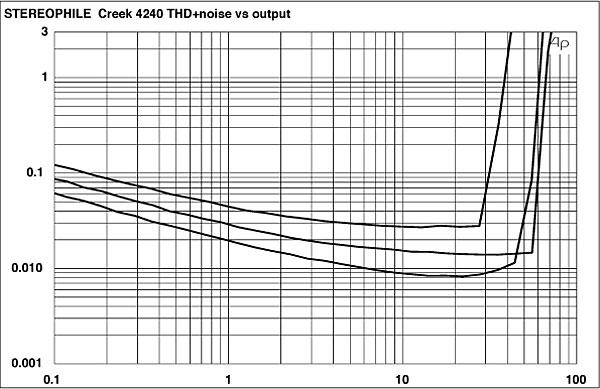

So in August of 2013 you're publishing a review from 1995.
Yup, my goal is eventually to have every Stereophile review dating back to 1962, the year of the magazine's founding, available on this website. Why would anyone have a problem with that?
John Atkinson
Editor, Stereophile

For me some of those products, long forgotten, take me back to when I first started becoming an audiophile in the early 80's and how great some of this gear was and still is. I think Stereophile is the only mag that does this sort of thing and I really like going down memory lane and learning new things about older gear. Keep em coming and frequently, life is short.